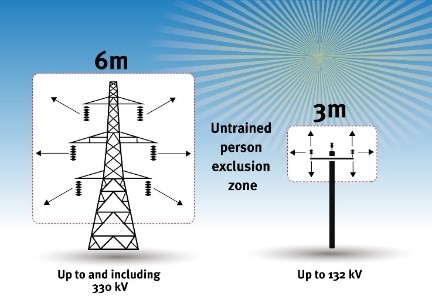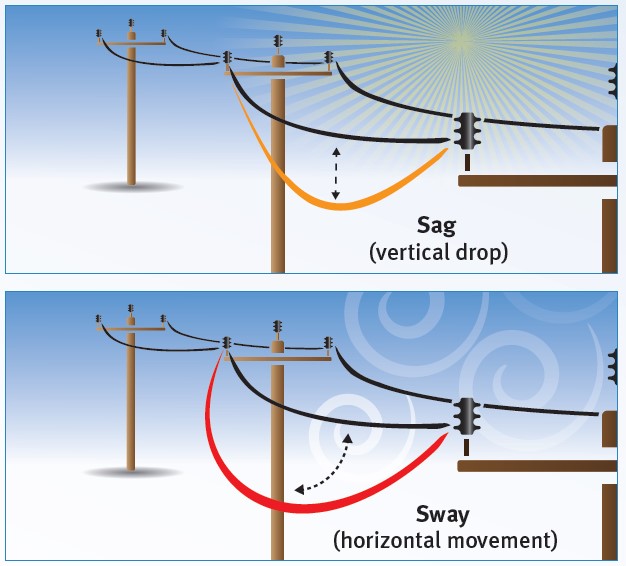Exclusion zones
Contact with overhead or underground electric lines can have deadly consequences.
Exclusion zones are the minimum safe distance from live power lines to reduce the risk of an electric shock.
Working near powerlines can be fatal. Touching them or straying into the exclusion zone around them can result in a serious electric shock.
If you must work near powerlines, you should follow these steps:
- Develop a safe system of work before you start
- Develop a safe system that ensures a safe distance from powerlines is maintained (stay outside the exclusion zone)
- Identify overhead and underground powerlines by consulting maps and/or talking to the property owner and electrical entity. For Ergon Energy and Energex visit lookupandlive.com.au for your free powerline safety plan.
- Conduct a site specific risk assessment – think about:
- the type of plant and equipment/tools used
- site and weather conditions
- type of work being done
- set-up and pack-up procedures.
- Put risk controls in place – the most effective way of controlling the risk is to de-energise the line for the duration of work where there is a risk of contact.
- Keep your workers and contractors informed about electrical safety
- Induct and train your workers and contractors in safe work procedures, emergency procedures, and exclusion zones (Figure 1).
- Carefully plan the tasks to be completed near powerlines and work away from them whenever possible, not underneath them.
- Show your workers the safe distance from a powerline by marking it on the ground.
- Ensure people are aware that powerlines sag or sway in hot or windy weather (Figure 2).
- Harvesters, elevating work platforms, irrigation pipes, grain augers, elevators, mobile grain silos, cranes, tippers and excavators have the potential to enter exclusion zones. Ensure operators know the height and reach of machinery or hand-held items to be used.
- Avoid going into exclusion zones
- Make powerlines and poles visible. Ask your electrical entity for permission to paint power poles and/or have them install markers or flags on the powerlines.
- Plan your work so tree branches do not fall across powerlines.
- Where possible, use insulated or non-conductive tools and equipment.
- Use a safety observer to make sure you stay well clear of exclusion zones.
- Follow the safety advice you obtain from your electrical entity.
- Although the following are the minimum safe distances, the best way to stay electrically safe is to maintain the greatest possible distance from powerlines.
Power line voltage (1 kV = 1000 volts) | Examples | Exclusion zone* |
Up to 132 kV | Low voltage and high voltage powerlines usually on poles | 3 metres |
Between 132 kV and 330 kV | High voltage powerlines usually on poles and towers | 6 metres |
Over 330 kV | High voltage powerlines usually on towers | 8 metres |
The table above does not fully detail exclusion zone dimensions and other requirements. For further information refer to Part 5 of the Electrical Safety Regulation 2013 and the Electrical safety code of practice 2020 - Working near overhead and underground electric lines
(PDF, 476.8 KB) .

Figure 1: Powerline exclusion zones

Figure 2: Powerlines sag or sway in hot or windy weather
Industry specific guides for working near powerlines
- Working safely as an arborist near powerlines (PDF, 1.36 MB)
- Working safely on billboards near powerlines (PDF, 1.41 MB)
- Working safely near powerlines in the rural industry (PDF, 1.87 MB)
- Working safely near powerlines in the construction industry (PDF, 1.04 MB)
- Working safely near powerlines (PDF, 0.8 MB)
More information
- Electrical exclusion zones film
- Ergon Energy
- Energex
- Powerlink
- Dial Before You Dig
- Look up and Live map - displays the Energex and Ergon Energy electricity networks
